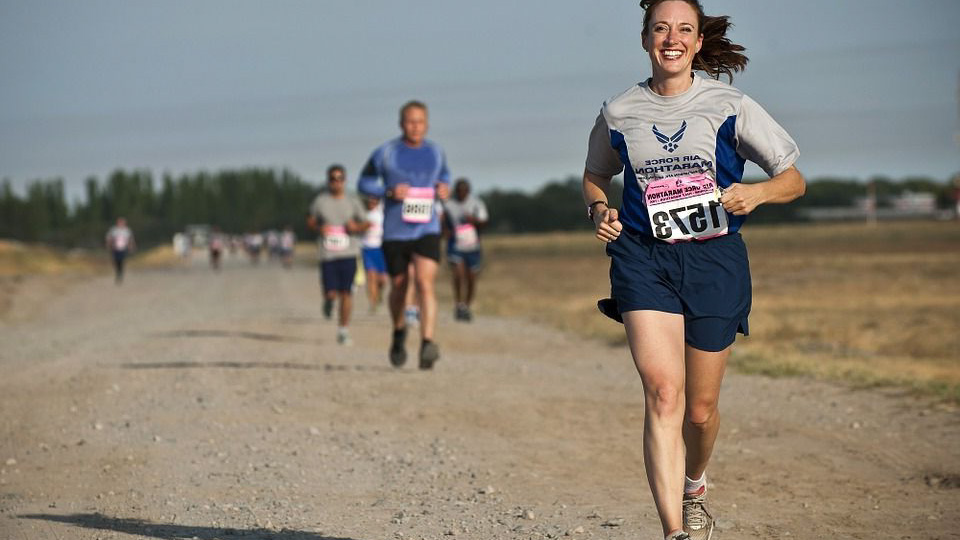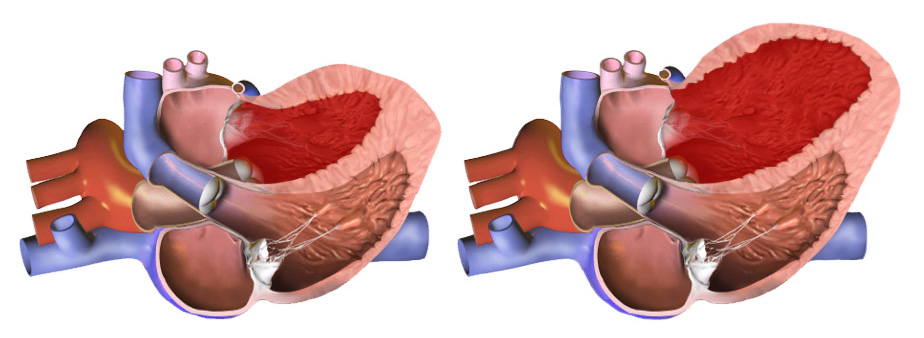Adaptation of the Cardiovascular System to Exercise

Source: Pixabay

"The only constant is change."
The ancient Greek philosopher Heraclitus
A popular mantra of the Philadelphia 76ers basketball team is ‘Trust the Process’. This relates to the organization’s commitment to up building the team from scratch using young, talented players. After their last win over the Miami Heat in the playoffs, the slogan has become fact-- there is much to be gained from ‘trusting the process’.
Adaption is a gradual change-- physical, physiological or behavioral-- in an organism that helps get it ‘suited to’ or fits it to its environment. Adaptation is an evolutionary process that ensures the survival of a species. Without being able to adapt to changing environmental conditions, an organism faces certain death.
Adaption is not fixed. It is a process, meaning that the change occurs gradually.
It is a product, alluding to the resultant physical characteristics that come from an adaptive process. For example, in desert conditions, the barrel cactus have expandable stems where water can be stored. The desert Kangaroo rat also conserves water by excreting solid urine.
The same way the body responds and adapts to changes in the environment, it responds to and adapts to the effect of exercise on the body systems. During exercise, there’s an increased demand for oxygen, nutrient and blood supply by the exercising muscles.
The metabolic processes occur at a higher rate and more wastes and heat are produced.
For the ‘survival’ of the exercising muscles, the cardiovascular system must match these increased demands placed on it. The changes can be immediate or long term.
Immediate Response of the cardiovascular system to exercise
Five major parameters in the cardiovascular system must change in response to the increased demands placed by the exercising muscles on it.
- Heart rate
- Stroke volume
- Cardiac output
- Blood flow
- Blood pressure
Heart rate
Even before the exercise activity begins, there is an anticipatory increase in the resting heart rate. The immediate response of the cardiovascular system is to increase the heart rate from 75 beats per minute for the nonathlete to as high as 195 beats per minute.
In fact, of all the cardiovascular system parameters, it is the heart rate that increases the most in response to the increased demands placed on it.
However, this increase in heart rate is gradual, occurring with a matching increase in exercise intensity. This means that the heart rate increases in direct proportion to exercise intensity until the maximum heart rate is reached. An estimation for the maximum heart rate is 220-age.
Stroke volume
This is the amount of blood pumped by the left ventricle per contraction. As exercise intensity increases, the volume of blood pumped out of the left ventricle also increases to match the body’s increased demands. The stroke volume continues to match exercise intensity but only up to a point.
The increase in stroke volume can be attributed to the decreased total peripheral resistance and a concurrent increase in venous return.
The stroke volume can increase from the average resting value of 50-70ml/beat to 110-130ml/beat. You will notice how moderate this increase is when compared to the increased heart rate during exercise.
Cardiac output
The cardiac output is the amount of blood pumped out by the heart in one minute and also the product of the stroke volume and the heart rate increases with increasing exercise intensity. This can be attributed to a number of factors.
The increased heart rate, stroke volume, total peripheral resistance and venous return all contribute to a higher cardiac output. In a young man at rest, the cardiac output is 5.5L/min. During exercise, this value can increase to as high as 23L/min.
Blood flow
The major requirement for exercising muscles is the delivery of oxygen and blood, the removal of waste and heat distribution to the skin. To achieve this, blood flow to the exercising muscle is a priority.
The blood flow to exercising muscles increases to as high as 25 fold during exercise. Although the skeletal muscle pumps decrease blood flow during contraction, the blood flow increases due to an increase in the amount of metabolites that causes vasodilation.
The cardiovascular system diverts blood from the kidneys, liver stomach and intestines to further supply exercising muscles. For this reason, athletes are advised to eat hours before a physical activity so this diversion of blood away from these organs will not be hindered.
Also, an increase in systolic blood pressure accounts for an increase in blood flow to the muscles.
Blood pressure
Although the diastolic blood pressure remains unchanged, the systolic blood pressure increases greatly during exercise. The normal blood pressure is 110-140mmHg for systolic and 60-90mmHg for diastolic. This value can increase to as high as 200mmHg in untrained athletes.
Long-term adaption of the cardiovascular system to exercise
Heart rate
For conditioned athletes, especially athletes used to prolonged periods of physical activities like endurance athletes, the resting heart rate over time decreases to as low as 50 beats per minutes. This resting low heart rate or bradycardia is one of the symptoms of the athletic heart syndrome.
In athletic heart syndrome, the heart rate is lower than normal and there is evidence of cardiomegaly- an enlarged heart.
The bradycardia is an advantageous long-term adaptation of the heart to prolonged strenuous exercise as the heart efficiency is remarkably increased. Also, the heart has a large window to increase heart rate as exercise intensity is increased from 50 beats per minute to as high as 185 beats per minute.

Normal vs Enlarged heart
By BruceBlaus CC BY-SA 4.0 From Wikimedia Commons
Stroke volume
For seasoned endurance athletes, however, the resting stroke volume of 90-110ml/beat can increase to as high as 150-220ml/beat. This remarkable increase when compared to the untrained athlete can also be attributed to the athletic heart syndrome.
Cardiomegaly leads to an increased and highly muscular left ventricle. Therefore the force of contraction and the stroke volume is higher.
Cardiac output
In an endurance athlete, again the increased heart musculature as a result of the athlete heart syndrome, the total peripheral resistance, the increased venous return, heart rate and stroke volume can cause the cardiac output to increase to as high as 30L/min.
To put this in perspective, a highly trained athlete has a resting heart rate as low as 50 and a left ventricular hypertrophy all of which are compensated by a high stroke volume. This makes the pumping efficiency of the heart in a highly trained athlete far greater than that of an untrained athlete.
Blood flow
In highly trained athletes, the blood flow increases even more. This is aided by an increase in stroke volume, blood pressure and opening up of more capillaries.
Blood pressure
In highly trained athletes the systolic pressure can rise to as high as 250mmHg. This high systolic blood pressure further enhances blood redistribution to the exercising muscles.
Perhaps the most amazing physiological adaptation to prolonged exercise is the athletic heart syndrome which is a combination of exercise-induced cardiomegaly and bradycardia. This improves the overall efficiency of the cardiovascular system during exercise.
From the foregoing, it is readily apparent how vital a healthy cardiovascular function is to athletic performance. For this reason, athletes with any heart disease can barely muster up enough cardiovascular function to drive athletic performance. The same goes for old people.
The cardiac output decreases with advanced age. Between ages 18 and 80 there is a 50 percent decrease. This explains why athletic performance fades with increasing age.
The critical role the cardiovascular system plays during exercise cannot be overemphasized. It is the major limiting factor to athletic performance.
I will always remember the death of Cameroonian international, Marc-Vivien Foé who slumped and died in the middle of a football match. An autopsy later revealed a cardiovascular dysfunction due to hypertrophic cardiomyopathy. (An idiopathic thickening in any part of the heart. )
The Cardiovascular system is made of the heart and the blood vessels, and yet it is more than the sum of its parts, it plays a major role in homeostasis and our survival.

References
Adaptation
Athletic heart syndrome
Exploring the tropical rain forest
Guyton, Arthur C, and John Hall, Textbook of Medical Physiology. Elsevier, 2000.
The Three Types Of Environmental Adaptation
The Cardiovascular system and exercise
Hypertropic cardiomyopathy
Your post has been selected as #adsactlyspostoftheday :)
Join us in our Discord channel here to drop your post in our post promotion page, and make sure to use the @adsactly tag in the post itself.
Thank you. I'm pleasantly surprised.
The post inspired me to stand up from my chair and jump for few minutes. So nice writing and it is great to see your post isselected by @ADSactly curation teem.
Thank you. I'm flattered I could make you jump. I appreciate.
You never cease to amaze me with the quality of your writing. You piece together your details so eloquently and your information is spot on and well researched. Not enough people are aware of their cardiovascular health. Great job!!
Thank you
The best post about health.
Thanks for information
Great work
Now you're flattering me, but thank you
hahaa .. you are the best. I'm proud of you
thanks, really
What a terrific post.
High quality and well written from edge to edge. You really are a superior grade writer. It is a privilege to read it!
thank you
Thanks for another quality post.
Is it understood how the heart gets instruction to speed up or lower the beat rate?
I know adrenaline plays a key role but how is it released? Is the brain controlling this?
Yep, the brain and a well-coordinated number of factors. I might make a detailed post about that. It's quite interesting.
this was cool to read!
"In a young man at rest, the cardiac output is 5.5L/min. During exercise, this value can increase to as high as 23L/min." That is quite a jump. This is a well researched post. Again, I encountered the term "stroke volume" for the first time here. It's no small education I get from your health posts. Thanks.
Your post has been upvoted by the @steemainsarena community trail. Our goal is to support minnows on steemit to help them grow. You can join our discord server here; https://discord.gg/C88kEjB
You can support us by donating steem/sbd or delegating sp to steemainsarena trail to acknowledge our mission.